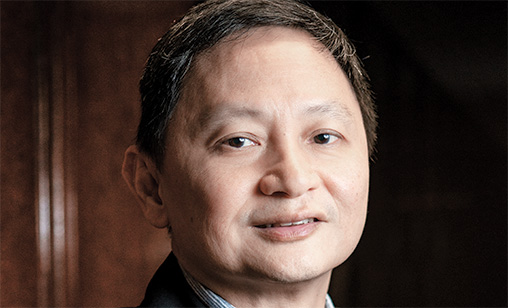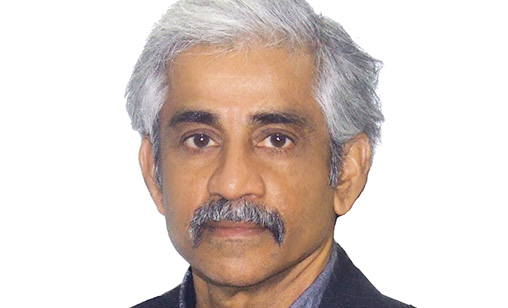Special Report
Stampede ahead as airlines rebuild networks
Asia-Pacific airlines are rebuilding their networks as the region’s travel restrictions ease. Restoring grounded capacity and reopening routes remains complicated for carriers, associate editor and chief correspondent, Tom Ballantyne, reports.
October 1st 2022
It’s a stampede. Almost daily airlines across the Asia-Pacific either are announcing the re-introduction of routes suspended during the pandemic or launching destinations from changing market conditions. Read More » But returning airline networks to pre-crisis scale still has some way to go, analysts unanimously agree.
As of July this year, international traffic recovery in the Asia-Pacific was at 35% of 2019, a far cry from other global regions now achieving upwards of 90% of seats occupied pre-COVID, points out the International Air Transport Association’s (IATA) regional vice president Asia-Pacific, Philip Goh. “The recent acceleration in border reopening in the Asia-Pacific will force more airlines to ramp up passenger capacity but returning airliners and flight crews to the skies will take some time. For Southeast Asia, international seat capacity at September 2022 was 48% of 2019 levels and North Asia was 20%,” he said.
 |
There is, however, some light at the end of the tunnel as a number of risk-averse governments are lifting entry restrictions that have put the brakes on regional and international recovery. On September 26, Hong Kong shortened hotel quarantine for inbound travellers. The welcome breakthrough immediately sprung Cathay Pacific Airways into action. It will add more than 200 city pair flights to regional and long-haul destinations in October. Japan has removed quarantine requirements for inbound travellers and restored visa free travel for international visitors from October 11. Taiwan followed suit on October 13.
There remains one critical missing piece in the regional network puzzle. China, vital to the networks of many Asia-Pacific airlines, is holding fast to tough entry restrictions for inbound travellers. However, there is hope China may start easing its zero-Covid-19 strategy by the end of October after the Communist Party of China holds its 20th National Congress in Beijing on October 16.
Unfortunately, the damage has been done by China and Japan if forecasts that the Asia-Pacific has been toppled as the world’s biggest civil aviation market turn out to be correct.
It is predicted the region will drop to runner-up status passenger share, behind Europe and about level with North America, the latest figures from Airports Council International (ACI) show. China and Japan, the largest contributors to the region’s overall traffic, are predicted to be around 55% of pre-pandemic levels by year-end, ACI calculates.
ACI Asia-Pacific director general, Stefano Baronci, said the region’s traffic will not fully recover to 2019 levels unless all countries keep their borders open to facilitate freedom of movement.
“Although the latest ACI forecast predicts 22% growth for 2022 over 2021, the share of passenger traffic in the Asia-Pacific is likely to drop to second globally, with an estimated 1.84 billion passengers, a decline of 45% compared with 2019. We are urging states to take a measured approach to facilitate the recovery in a more sustainable manner and without causing significant impact on their healthcare system,” he said.
IATA’s Goh said along with the gradual reopening of international borders in the region, there has been strong uptake and sustained increases in passenger demand since the second quarter of 2022. “The pace and strength of the recovery differs across the region. On routes between countries that have reopened fully, such as between Australia and Singapore, the restoration of seat capacity is swift and in tandem with the strength of the rebound in passenger demand as travel restrictions were rolled away,” he said.
 |
“Capacity reinstatement in countries slower to reopen and slower to shed stringent travel restrictions is muted. For example, on routes serving Hong Kong, Taiwan and Japan, capacity is still way off the 2019 levels, as demand is underwhelming.
“Japan’s recent announcement to lift visa requirements and arrival caps will pave the way for acceleration in capacity restoration in and to and from Japan to meet the expected strong interest for travel there.”
With recovery looking more robust, airlines and aviation stakeholders like ground handling agents and airports must be fully prepared for the traffic upswing that will come, Goh said.
“We must work to avoid the disruptions and problems experienced in major hubs in Europe and the U.S. by being prepared and being anticipatory. The entire aviation value chain has to be adequately resourced to handle the expected surge of air travelers taking to the skies again in the Asia-Pacific,” he said.
Association of Asia Pacific Airlines (AAPA) latest traffic figures, actually for July, show the strong recovery in international air travel is continuing. The region’s airlines carried 11.3 million passengers in July, the first time monthly numbers were above the ten million mark since February 2020.
Comparing July 2021 to July 2022, passengers carried climbed from 1.5 million to 11.3 million, and load factor increased from 32% to 80%. In the first seven months of this year, AAPA airlines carried 42.84 million passengers and had a load factor of 65.4%. These results compare with 2021 numbers of 8.78 million passengers transported and a 28.7% load factor. Tellingly, in July, revenue passenger kilometers rose by 546% year-on-year, significantly outpacing the 157% expansion in available seat capacity.
AAPA director general, Subhas Menon, said travel markets continued to accelerate in July with the 43 million air passengers carried in the first seven months of 2022 almost five-fold more than the nine million flown last year. “However, full recovery remains a long way off, with traffic in July averaging only 34% of the corresponding pre-pandemic month,” he said.
Another promising sign in the region’s recovery is major airlines beyond the region are restarting routes suspended during COVID. For example, British Airways (BA) will resume non-stop London Heathrow-Tokyo Haneda from mid-November, a flight put on hold in November 2021. United Airlines (UA) is resuming non-stop Melbourne-Los Angeles from late October, initially with three flights a week before increasing the service to daily from December 1. UA’s three times weekly Melbourne-San Francisco rotation will become daily from October 28.
United Arab Emirates (UAE) carrier, Etihad Airways, will launch Abu Dhabi to Guangzhou in October, its third destination to China after Beijing and Shanghai. UAE rival, Emirates Airline, has confirmed its iconic A380s will resume flights from Dubai to Auckland and Kuala Lumpur from December 1. KLM Royal Dutch Airlines, which suspended Amsterdam to Kuala Lumpur and Jakarta two-and-a-half years ago, will return to the Asia-Pacific destinations four times a week from October 31.
Finnair and Qatar Airways have decided to work closely to improve connections from Scandinavia to Asia via Doha. Finnair was particularly hard-hit by the COVID-19 pandemic and the closure of Russian airspace after the invasion of Ukraine in February.
These incoming long-haul routes are being matched by a gradual expansion of flights outside the region by local operators. A few examples are Japan Airlines (JAL) increasing Tokyo Haneda-Chicago O’Hare to daily after October 31. It will add frequency on Osaka Kansai-Los Angeles, to three times weekly, in December. Air New Zealand has started flying the fourth longest nonstop flight - Auckland-New York JFK – in the world. Korean Air will launch Seoul- Budapest on October 29 and is returning to Dubai.
As the only route development event dedicated to Asia-Pacific, it will provide a platform for the region’s airlines, airports, tourism authorities and aviation stakeholders to meet, share best practice and come together to develop network strategies and ensure future air service development across Asia Pacific.” |
megan moroney says:
January 27th 2024 05:41pm